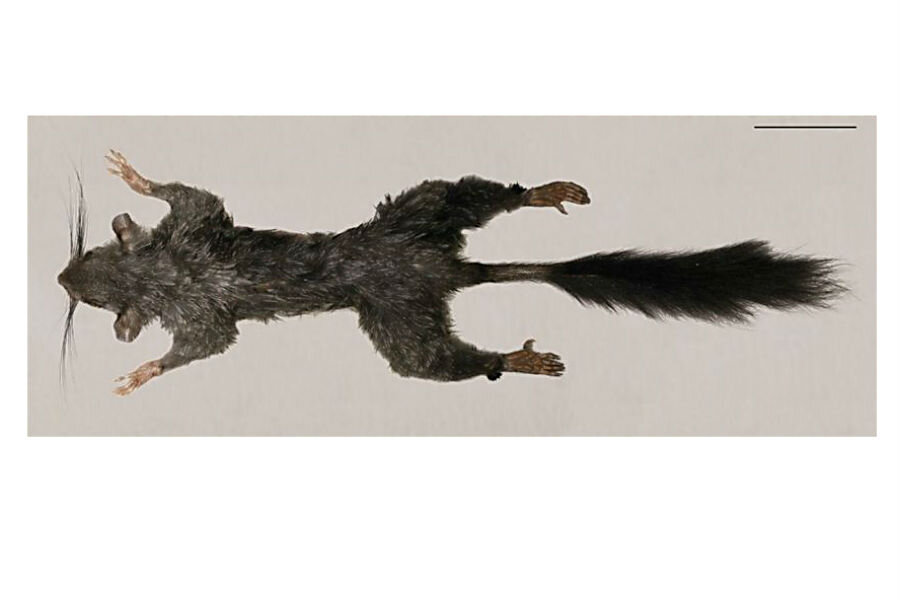Zenkerella, an elusive scaly-tailed squirrel, is rediscovered
Loading...
After years of searching, scientists have finally found their scaly-tailed squirrel.
The first complete specimens of Zenkerella insignis, a mysterious tropical rodent that has eluded researchers for over a century, were described Tuesday in the journal PeerJ. Discovered on Equatorial Guinea’s Bioko Island, Zenkerella is one of several “living fossils” to be rediscovered in recent years.
“It really is one of those pretty incredible examples of discovery,” lead author Erik Seiffert told the Washington Post, “and a sign of the kinds of discoveries that can still be made.”
Over the course of its 50-million year lineage, Zenkerella has changed very little. The elusive rodent resembles a common squirrel, but with bizarre scales at the base of its bushy tail. Little is known about its lifestyle, behavior or whether or not the species is threatened, because no scientist in history has ever seen one alive.
Dr. Seiffert, a University of Southern California paleontologist and one of the world’s only Zenkerella specialists, believed that the creature could reveal new insights into rodent and mammal evolution. But until now, it was impossible to be sure: researchers had only a handful of incomplete skeletons to work from.
So Seiffert enlisted the help of David Fernández, a wildlife conservation biologist working on Bioko Island. Dr. Fernández had never heard of Zenkerella, but the creature had apparently been seen on the island. He spent nearly a year in fruitless pursuit of the animal.
Then, finally, good news. Three recently-killed specimen were found in Bioko.
“I think [Seiffert] was even more excited than I was,” Fernández told the Washington Post. “It was amazing, the first entire specimen available for us, and for science basically.”
With full skeletons and soft tissue to work with, Seiffert and Fernández plan to sequence the Zenkerella genome. But already they have gleaned new insights from the specimens.
Zenkerella is closely related to a family of rodents called Anomalure, which glide with a specialized “parachute membrane.” It was once thought that Zenkerella lost this membrane through millions of years of evolution, but new research suggests that the adaptation arose after the two taxons split. Evolutionary biologists increasingly agree that advanced adaptations, such as flying and swimming, are unlikely to be reversed after they are acquired through evolution.
In the last decade, a number of rare “living fossils” have been seen – even after researchers believed them extinct. In 2012, scientists discovered the last known pygmy right whale in a 17-million year lineage. A few years later, explorers photographed a group of Bouvier's red colobus monkeys, which were feared extinct for 40 years, along the Congo River.
Allonautilus scrobiculatus, a mollusk known for its fuzzy body, hadn’t been seen for three decades when it was discovered off the coast of Papua New Guinea in 2015.
But in many of these cases, greater challenges lie ahead. Without sufficient data, conservationists struggle to diagnose population trends in rare animals. Seiffert and colleagues are still unsure whether Zenkerella is threatened or not.
“These small obscure animals, they’re not getting the attention they would actually need to confirm their distribution,” Seiffert said.








